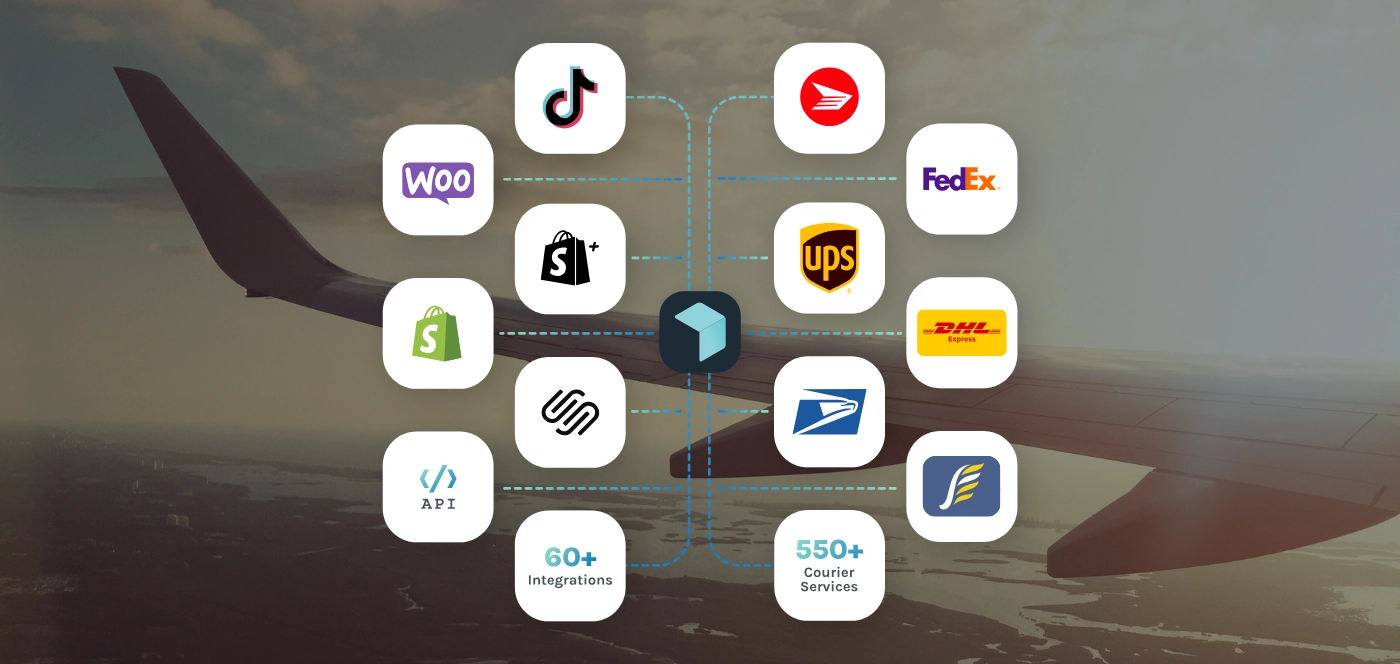Businesses that regularly ship packages to customers around the world know that fuel surcharges can have a big impact on their profit margins. These charges can be very expensive; they can also be tricky to deal with since they fluctuate frequently in line with fuel prices. Because of this, these additional fuel fees can be a huge expense for online retailers. This article will show you how to navigate these additional charges so you can minimize their impact on your business.
What is a Fuel Surcharge?
This is an additional fee that carriers like DHL, UPS, and FedEx charge on top of basic shipping rates. These charges are designed to help these carriers cover the costs associated with fuel, especially given the constant fluctuation in fuel prices.
The fees charged by each carrier are determined by the weekly National US Average on Highway Diesel Fuel Price report, which is compiled by the US Energy Information Administration (EIA). Internationally, the fuel surcharge rates are calculated by the US Gulf Coast (USGC) price for kerosene. Most carriers use these rates with a standard fuel surcharges calculator to figure out an additional charge that helps them protect their bottom lines.
How Will They Affect My Shipments?
Of course, any additional charges that carriers impose will be passed onto businesses and affect their bottom lines. And, as a small or medium business owner, you want to do all you can to keep your customers by offering them affordable shipping rates.
However, with the constantly fluctuating surcharge rates, maintaining cheap shipping rates for your customers can take its toll on your bottom line. That’s when you can try to negotiate the rates you’re being charged with your shipping company. In particular, you can often negotiate a flat rate for your shipments if you consistently ship large volumes of packages.
How Does It Work?
Additional charges for fuel are handled differently by each carrier. It should be noted that USPS is the only one that doesn’t charge an additional fuel fee among the major couriers - instead, they offer multiple flat-rate shipping options. Let’s take a look at the major carriers and how they handle fuel charges:
FedEx
The FedEx fuel surcharge rates are subject to weekly adjustments based on the report published by the U.S. Gulf Coast (USGC) on prices for kerosene jet fuel. Some of the services which incur surcharges are:
- Out of Delivery Area (ODA)
- Broker Routing Fee
- Out of Pickup Area (OPA)
- Saturday Delivery (SDL)
- Residential Delivery Surcharge (RESI)
- Saturday Pickup (SPU)
- Additional Handling Surcharge - Freight
- Additional Handling Surcharge - Dimension
- Oversize Charge
- Signature Surcharge (ISR, DSR, ASR)
- Non-Stackable Surcharge
UPS
USPS fuel surcharge fees apply to both domestic and international shipments, including any made with UPS Worldwide Express Freight services. The surcharge for courier services with this company include:
- Pickup Charges
- Delivery Charges
- Remote/Extended Delivery
- Remote/Extended Pickup
- Residential Surcharge
- Saturday Delivery
- Saturday Pickup
- Return Services
- Signature Required Services
- Additional Handling
- Large Package
- Over Maximum Limits
- Oversize Pallet Handling Surcharge
- Peak Surcharges
Apart from the above-listed services where the UPS fuel surcharge applies, the company also maintains Air Freight Fuel Charges which applies to most of its air freight services in the countries where these services are available.
DHL
For DHL, the surcharge applies to transportation charges on all its shipping services. Here are some of the DHL services which attract additional fees for fuel:
- Non-Stackable Pallet
- Remote Area
- Saturday Pickup
- Saturday Delivery
- Overweight Piece
- Elevated Risk
- Oversized Piece
It should also be noted that DHL Express reserves the right to change its current charges index and table with or without notice.
How to Calculate Fuel Charges
The surcharge rates are calculated based on a certain percentage, which is determined mainly by the average monthly increase or decrease of fuel prices over the course of a given year. Since fuel prices usually increase in the spring and early summer, you can expect to see noticeable increases in shipping charges during these seasons. Below are the fuel surcharges calculator percentages offered by the major carriers.
- UPS Ground Services - 4.25%
- UPS Air, International, and 3-Day Select Services - 2.25%
- FedEx Ground Services - 2.75%-3%
- DHL - 0.5%
Ship Smarter By Understanding Fuel Fees
Making the most of the online marketplace allows you to cut down on expenses, especially when it comes to shipping packages to your customers. However, to do this, it’s important to understand how to manage the surcharges. If you’re able to negotiate with a carrier or logistics company to get minimized or flat-rate shipping, you will be able to protect your bottom line.
Easyship includes fuel surcharge fees when calculating shipping costs so there are never any hidden costs. Sign up for a free Easyship account now to help improve your profit margins by saving on shipping.
Fuel Surcharges FAQ
What is a fuel surcharge example?
UPS fuel surcharges are between 15-25% for all ground, domestic air, international air exports, and international air imports. On the other hand, FedEx charges between 16-23% for all shipments.
How do you avoid a fuel surcharge?
With oil prices reaching record highs, avoiding fuel surcharges is hard. Instead, using a shipping platform like Easyship with pre-negotiated discount shipping rates can help curb this issue.
Are fuel surcharges legal?
Yes, fuel surcharges are legal. To learn more about the breakdown of fuel surcharges, visit your shipping courier's website.















































.svg)
.svg)






.avif)
.avif)

.avif)
.avif)


.avif)


.avif)










.avif)
.avif)



.avif)
.avif)


.avif)
.avif)


.avif)



.webp)







.svg)





